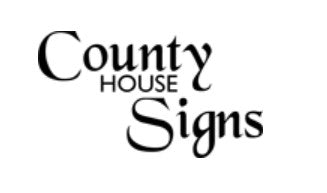
Naming buildings is a long held British tradition that was once the preserve of the landed gentry. Their manors, halls, lands and castles all had names. The smaller buildings on that land would then have names that tied them to the lord of that specific part of the land. Later, tradesmen and merchants decided to follow suit. If you want to join the club, is it as simple as just having personalised slate signs made?
If you are lucky enough to live in a period property that already has a name, then all that is left for you to do is commission a new slate house sign that is in keeping with the property, and can be clearly seen from the entrance to your property. However, if you have a newer property, the chances are your home has a number rather than a name. The street numbering Act of Parliament was enacted in 1765. It assigned a number and road name designation to every house built in towns and cities across the country. Furthermore, it introduced guidelines on how these numbers were to be laid out. Odd numbers are on the left of the street and even numbers are on the right side, numbered so that they are heading out of the town centre. Another tradition that has continued is to remove the number 13 from the numbering system of engraved slate house signs. This is because of long held superstitions about it being an unlucky number. So, you often find 12A being used instead. Letters are also used where additional houses have been added since the street was first built, or a house has been turned into flats that need to be identified with slate house signs.
But, what does all this mean for you if you want to add a name to the personalised slate signs for your house? If your house has a number, but no name, you can add a name without having to inform the Post Office or local council, if the house number is still clearly visible on any black slate house signs you commission. If your house has a name, and no house number, then permission is required before you can make any changes. You need to apply to the local council and the Post Office, in writing, as the registered name forms part of the official address of the property. As the rules differ between councils regarding changing the name of a property, you need to check with your specific council before moving forward and ordering contemporary slate house signs. One of the things that may stop you from using your chosen name is if a property close by already has that name, or has something very similar. This is because of the dangers of potential confusion for emergency services, as well as for others. It is therefore a clever idea to take a walk around your local area and check before ordering your new signs to be made.
In terms of choosing a name for your house, the most common name within the UK is ‘The Cottage’, closely followed by ‘Rose Cottage’. It is important to pick something that is in keeping with the style and period of your home. And think twice before you choose a joke name for personalised slate signs. If you ever decide to sell on, will it deter potential buyers who don’t want to go through the process of changing the name?
